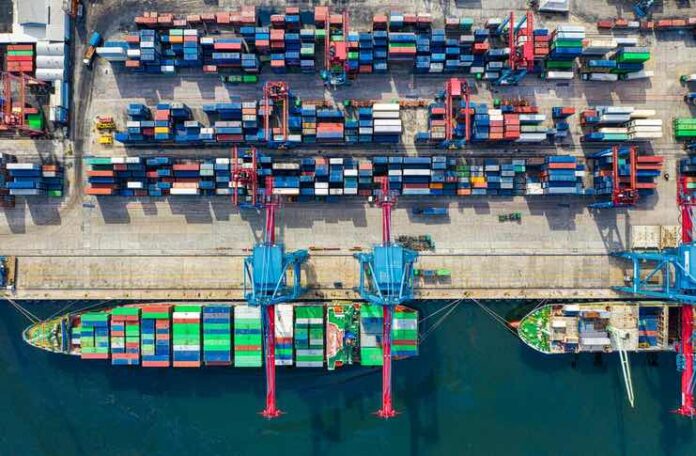
In the rapidly evolving landscape of global commerce, supply chain efficiency has become a pivotal factor for businesses striving to maintain a competitive edge. From the initial stages of load boards to the critical final step of last-mile delivery, each component of the supply chain demands meticulous attention and innovative solutions. As part of our business blog section, this article explores the key aspects of supply chain optimization and the strategies employed to enhance efficiency at every stage.
The Role of Load Boards in Modern Supply Chains
Load boards serve as a crucial starting point in the logistics and transportation industry. These digital platforms connect shippers with carriers, facilitating the matching of freight with available trucks. By leveraging technology, load boards streamline the process of finding suitable transportation options, thereby reducing empty miles and maximizing truck utilization.
For businesses looking to streamline their logistics operations and enhance supply chain efficiency, platforms like www.shiply.com offer a valuable resource for connecting shippers with carriers and optimizing freight management.
Key Benefits of Load Boards
- Increased Visibility: Load boards provide real-time data on available freight and trucks, allowing shippers and carriers to make informed decisions quickly.
- Cost Efficiency: By matching loads with carriers efficiently, load boards help in minimizing transportation costs and optimizing route planning.
- Market Expansion: Shippers can access a broader network of carriers, enabling them to expand their market reach and enhance service levels.
Optimizing Mid-Mile Logistics
Once a match is made on the load board, the next phase involves mid-mile logistics, where the freight is transported from the origin point to a distribution center or hub. This stage is critical for maintaining the flow of goods and ensuring timely delivery.
Strategies for Mid-Mile Optimization
- Route Optimization: Utilizing advanced algorithms and GPS technology, companies can determine the most efficient routes, reducing transit times and fuel consumption.
- Consolidation Centers: Establishing consolidation centers helps in grouping smaller shipments into larger loads, improving transportation efficiency and reducing costs.
- Real-Time Tracking: Implementing IoT devices and telematics allows for real-time monitoring of shipments, providing visibility and enabling proactive issue resolution.
The Importance of Last-Mile Delivery
The last mile, the final step of delivering goods to the end customer, presents unique challenges and opportunities. With the rise of e-commerce, last-mile delivery has gained significant attention due to its direct impact on customer satisfaction and overall supply chain efficiency.
Challenges in Last-Mile Delivery
- Urban Congestion: Delivering goods in densely populated urban areas can lead to delays and increased costs due to traffic congestion.
- Customer Expectations: Modern consumers demand fast, reliable, and flexible delivery options, putting pressure on logistics providers to meet these expectations.
- Cost Management: Last-mile delivery often constitutes a substantial portion of the total delivery cost, necessitating efficient cost management strategies.
Enhancing Last-Mile Efficiency
- Technological Integration: Employing technologies like route optimization software, autonomous delivery vehicles, and drones can significantly enhance last-mile delivery efficiency.
- Micro-Fulfillment Centers: Setting up small, strategically located fulfillment centers closer to the customer base can reduce delivery times and costs.
- Crowdsourced Delivery: Utilizing gig economy workers for deliveries can provide flexibility and scalability, especially during peak demand periods.
Leveraging Data and Analytics
Across all stages of the supply chain, the integration of data and analytics plays a crucial role in enhancing efficiency. By collecting and analyzing data, companies can gain insights into operational bottlenecks, forecast demand accurately, and make data-driven decisions.
Data-Driven Decision Making
- Predictive Analytics: Utilizing historical data to predict future trends and demand patterns helps in proactive inventory management and resource allocation.
- Performance Metrics: Monitoring key performance indicators (KPIs) such as on-time delivery rates, order accuracy, and transportation costs allows for continuous improvement and optimization.
- Customer Feedback: Analyzing customer feedback and delivery performance data helps in identifying areas for improvement and enhancing service quality.
Conclusion
From load boards to last-mile delivery, every stage of the supply chain offers opportunities for enhancing efficiency through innovative strategies and technological integration. By focusing on optimization at each phase, businesses can achieve a more resilient, cost-effective, and customer-centric supply chain. As the industry continues to evolve, adopting the latest advancements will be crucial for maintaining a competitive edge in the global marketplace.




